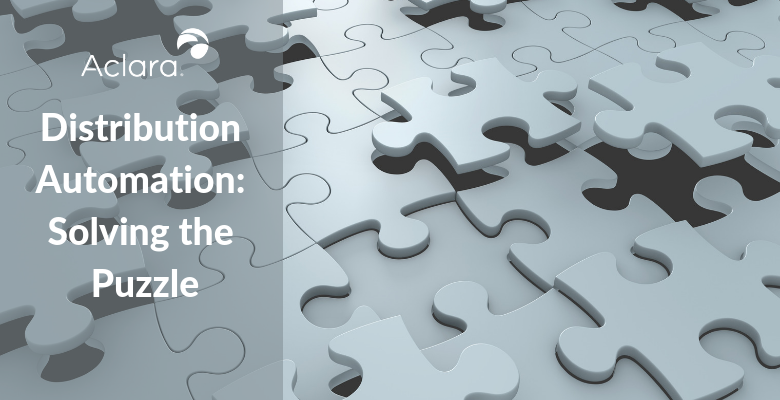When it comes to distribution automation (DA), pulling together a comprehensive solution is like doing a jigsaw puzzle when you haven’t got all the pieces or a box-top picture to guide you. Sure, you can do it, but you’re going to see plenty of holes, and it won’t necessarily be pretty when you’re done.
Still, that’s what most utilities are doing according to responses to a recent survey conducted by the energy-sector research firm Zpryme. You’ll find results and analysis of this study in a new white paper titled Today and Tomorrow: The Distribution Automation Ecosystem.
DOWNLOAD THE WHITE PAPER TO LEARN MORE ABOUT BUILDING A COHERENT DA STRATEGY
A whopping 87% of survey respondents agree or strongly agree that DA is crucial to grid modernization. But, more than half – 57% – favor an incremental approach to implementation, and that just won’t do.
Why point solutions present a challenge
A 2016 Department of Energy (DOE) report on DA that supports the Zpryme survey results had this to say: “Utilities have installed various advanced grid management systems, though these systems are rarely integrated with one another, potentially limiting their full contribution of system benefits.”
Likewise, to achieve top payback with DA systems, all the pieces must fit together, and that’s easier said than done. The report writers at DOE also noted that utility workers named data management and integration of disparate systems as the greatest challenge they faced.
Getting DA systems to work seamlessly together will also be a headache because DA technology targets a wide range of use cases. Among them, you’ll find voltage management, outage prevention, and restoration, peak-load management, integration of distributed energy resources and conservation voltage reduction.
Integration is crucial
The use cases for DA involve at least some integration between utility systems for SCADA, outage management, geographic information systems, and advanced metering. They’ll also employ a wide range of devices on the system. A few of those devices include:
- Load tap changers that regulate voltage by varying the substation transformer ratio or tap
- Capacitor banks and voltage regulators located on the distribution system to supply local reactive power that corrects voltage sags and spikes
- Reclosers – also on the distribution system – to reclose circuits a pre-determined number of times when fault current is detected and report back to utility systems if the fault doesn’t clear itself
- Smart inverters that may be on customer-owned solar and storage but can still be used to support voltage and load management
According to the DOE, “Automated devices typically need more frequent firmware and software upgrades than traditional utility equipment. Standard templates from vendors typically require customization to meet each utility’s unique distribution system configurations and integrate effectively with existing SCADA systems, OMS, and DMS.” Such issues provide another argument for a full-scale DA implementation versus a piece-by-piece approach.
Another reason to rethink DA strategy
Here’s yet another reason that utilities might want to rethink point-by-point DA deployments. The same DOE report noted above also says, “FLISR implementation involves greater automation and integration than traditional technologies and systems.”
This means that the75 % of survey respondents who named fault location, isolation, and service restoration (FLISR) as their top application for automating distribution equipment should consider an integrated strategy from the start. If they’re putting in FLISR technology in an incremental way, it may be difficult to get the elements to interconnect.
So, if you’re already implementing DA technology – and especially if you’re not – now would be a good time to consider the full picture. After all, only 25% of utilities surveyed have taken time to do that and move ahead with a large-scale, integrated deployment of DA technology. Given the difficulty of pulling all the systems involved in DA together, that’s a little puzzling. To get a better understanding of the challenges facing utilities implementing DA, download our white paper.



